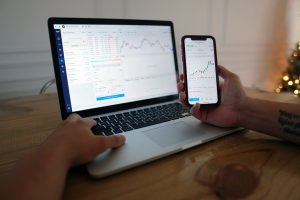When it comes to trading forex, having a solid understanding of technical analysis is essential. One of the most popular tools used by traders is the Fibonacci retracement levels. These levels, which are derived from the Fibonacci sequence, are used to identify potential levels of support and resistance in the market. However, many traders are unsure of what levels to use on the oscillator or OsMA indicator when using the Fibonacci retracement levels. In this article, we will discuss what levels you should use on OsMA forex.
What is OsMA?
Before we dive into what levels to use on OsMA, let’s first define what OsMA is. OsMA, or oscillator of moving average, is an indicator that is used to measure the distance between a short-term moving average and a long-term moving average. The indicator is displayed as a histogram that oscillates around a zero line. When the histogram is above the zero line, it indicates that the short-term moving average is above the long-term moving average, and vice versa when the histogram is below the zero line. The indicator is used to identify potential trend reversals and to confirm the strength of a trend.
Using Fibonacci retracement levels with OsMA
When using the Fibonacci retracement levels with OsMA, there are two main levels to consider: the 38.2% level and the 61.8% level. These levels are derived from the Fibonacci sequence and are used to identify potential levels of support and resistance in the market.
The 38.2% level is typically used as a support level when the market is in an uptrend. When the market retraces to this level, it is often seen as a buying opportunity, as traders believe that the uptrend will continue. Conversely, when the market is in a downtrend, the 38.2% level is used as a resistance level. When the market retraces to this level, it is often seen as a selling opportunity, as traders believe that the downtrend will continue.
The 61.8% level is typically used as a resistance level when the market is in an uptrend. When the market retraces to this level, it is often seen as a selling opportunity, as traders believe that the uptrend may be coming to an end. Conversely, when the market is in a downtrend, the 61.8% level is used as a support level. When the market retraces to this level, it is often seen as a buying opportunity, as traders believe that the downtrend may be coming to an end.
Incorporating OsMA with the Fibonacci retracement levels can help traders confirm the strength of a trend and identify potential trend reversals. When the OsMA indicator is above the zero line, it confirms that the short-term moving average is above the long-term moving average, indicating a bullish trend. When the OsMA indicator is below the zero line, it confirms that the short-term moving average is below the long-term moving average, indicating a bearish trend. When the market retraces to the 38.2% and 61.8% levels, traders can use the OsMA indicator to confirm the strength of the trend and identify potential buying or selling opportunities.
Conclusion
In conclusion, when using the Fibonacci retracement levels with OsMA, traders should consider the 38.2% and 61.8% levels. These levels are used to identify potential levels of support and resistance in the market and can be used in conjunction with the OsMA indicator to confirm the strength of a trend and identify potential trend reversals. As with any trading strategy, it is important to conduct thorough research and analysis before making any trades.





